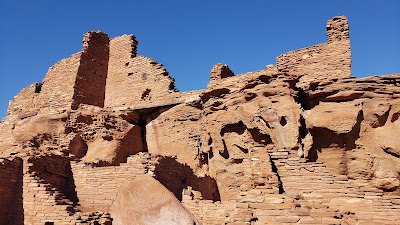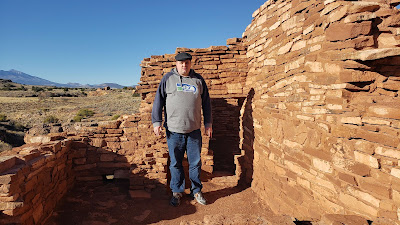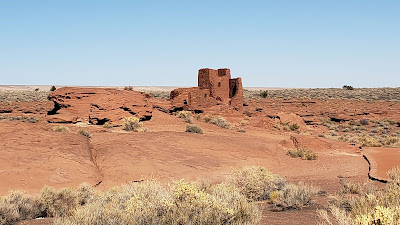Nearby city: Flagstaff, AZ
On the lonely wind-swept high plains north of Flagstaff, Arizona, lies the intriguing and mysterious ruins of an Ancestral Pueblan village. The Ancestral Pueblans, also known as the Anasazi, lived throughout the four corners area for thousands of years. You can also see ruins of their ancient settlements and cliff dwellings at Mesa Verde National Park, Walnut Canyon National Monument, and Montezuma Castle. The specific tribes that built the structures seen at Wupatki National Monument were the Cohonina, Kayenta Anasazi, and the Sinagua. Wupatki, a Hopi word meaning "tall house," was built around 500 AD. Certain parts of the dwelling are multiple-stories high. At its greatest extent, it comprised over 100 rooms and 2 kiva structures. Around the year 1100 AD, about 2,000 people lived in this area, with 85-100 people living in the Wupatki Pueblo itself.
Wupatki National Monument was established in 1924. Take some time to peruse the Visitor Center/Museum and then take the 0.5-mile loop trail to wander among the ruins.
These remains include a ball court (seen above), used to play athletic games and also conduct ceremonies and feasts. These ball courts are predominantly found much further south, usually in Hohokam or Mesoamerican ruins as far south as Mayan settlements in Guatemala. This ball court at Wupatki is the northernmost example of this type of structure that has ever been found. The presence of a ball court here suggests that the Ancestral Pueblans had some kind of contact with people far to the south.
Because of the lack of food and water sources, artifacts found at Wupatki indicate that they relied on trade with other peoples for these resources. There is also evidence that they harvested rain water (due to the lack of nearby springs) and had limited success growing maize and squash.
The walls are constructed from thin and flat blocks of Moenkopi sandstone, held together with mortar.
Although the settlements flourished up to the 12th century, by 1225 AD, this site had been permanently abandoned. It's not entirely known why the Ancestral Pueblans vacated Wupatki, but it was probably due to a period of sustained drought.
There are also other ruins to see at Wupatki National Monument. Stop by the Wukoki Pueblo, Lomaki Pueblo, and Nalakihu Citadel/Pueblo as well.
Lomaki Pueblo
Citadel Pueblo
Wukoki Pueblo
Wupatki National Monument is a very interesting stop and is great for a quick visit. Nearby Sunset Crater National Monument is also a good stop.
For more info on Wupatki: https://www.nps.gov/wupa/index.htm






























No comments:
Post a Comment